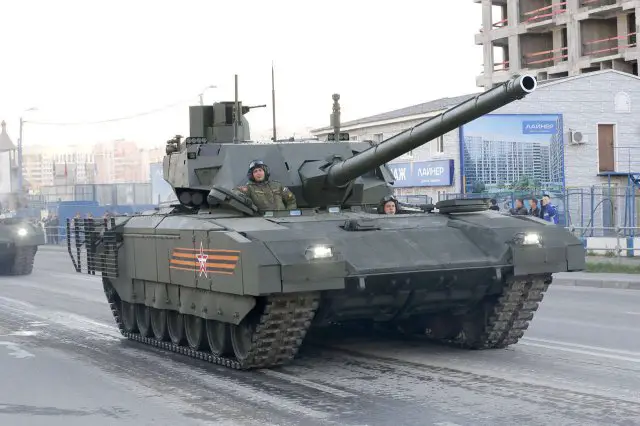|
|
|||
|
Military Defense Industry Technology - Russia
|
|||
|
|
|||
| Russian armored vehicles based on Armata chassis to be equiped with UAV | |||
|
Future Russian armor on the Armata commonized heavy tracked chassis will be equipped with Pterodactyl unmanned aerial vehicles (UAV), according to the Izvestia daily newspaper.
|
|||
|
|
|||
|
|
|||
|
The combat vehicles of the Armata family will be furnished with reconnaissance drones designed to reconnoiter the battlefield tens of kilometers around the operators to develop the situation and cue artillery fires and guided missiles onto targets. The UAV from the Moscow Aviation Institute (MAI) has unlimited loitering time because it has no onboard batteries and its power supply is via a flexible cable from a combat vehicle. The Pterodactyl is a lightweight drone with composite skin, which will be tethered to combat vehicles with a flexible cable. The UAV will loiter with a radius of 50-100 m around its vehicle at an altitude of tens of meters. It will carry a radar and a thermal imager. Compared with radio-controlled UAVs, the Pterodactyl will remain airborne for much longer time and carry heavier payloads, because it will not have to haul batteries. Another plus of the tethered drone is complete security against enemy electronic intelligence (ELINT) efforts. Another of the Pterodactyl’s features is its tilt-wing design affording the aircraft the strengths of the airplane and the helicopter. The solution enables the UAV to fly fast enough to move along its tank at full speed. To cap it all, the drone can take off from small airstrips, including doing so right off the tank’s hull. The concept of a tethered recon drone controlled via a flexible cable has been around for a while. It was pioneered by the West German-made Dornier Do-32K experimental unmanned helicopter controlled and fed the juice via a cable," expert Oleg Zheltonozhko tells Izvestia. "At present, the cable interface is used by the Israeli-made Hovermast copter but it is not used as part of a combat vehicle."According to Zheltonozhko, there are no systems yet, in which a recon drone is organic to a combat vehicle. "Using a light UAV fitted with a thermal imager and a radar system as an external means of observation seems to be a logical solution for future armor, which guns outrange its onboard target acquisition instruments," the expert says. "For instance, the main armament of the Armata [tank] has a range of 8 km, while its onboard observation devices can spot an enemy tank at a range of 5 km. |
|||
|
|
|||
|
© Copyright 2017 TASS. All rights reserved. This material may not be published, broadcast, rewritten or redistributed.
|
|||















